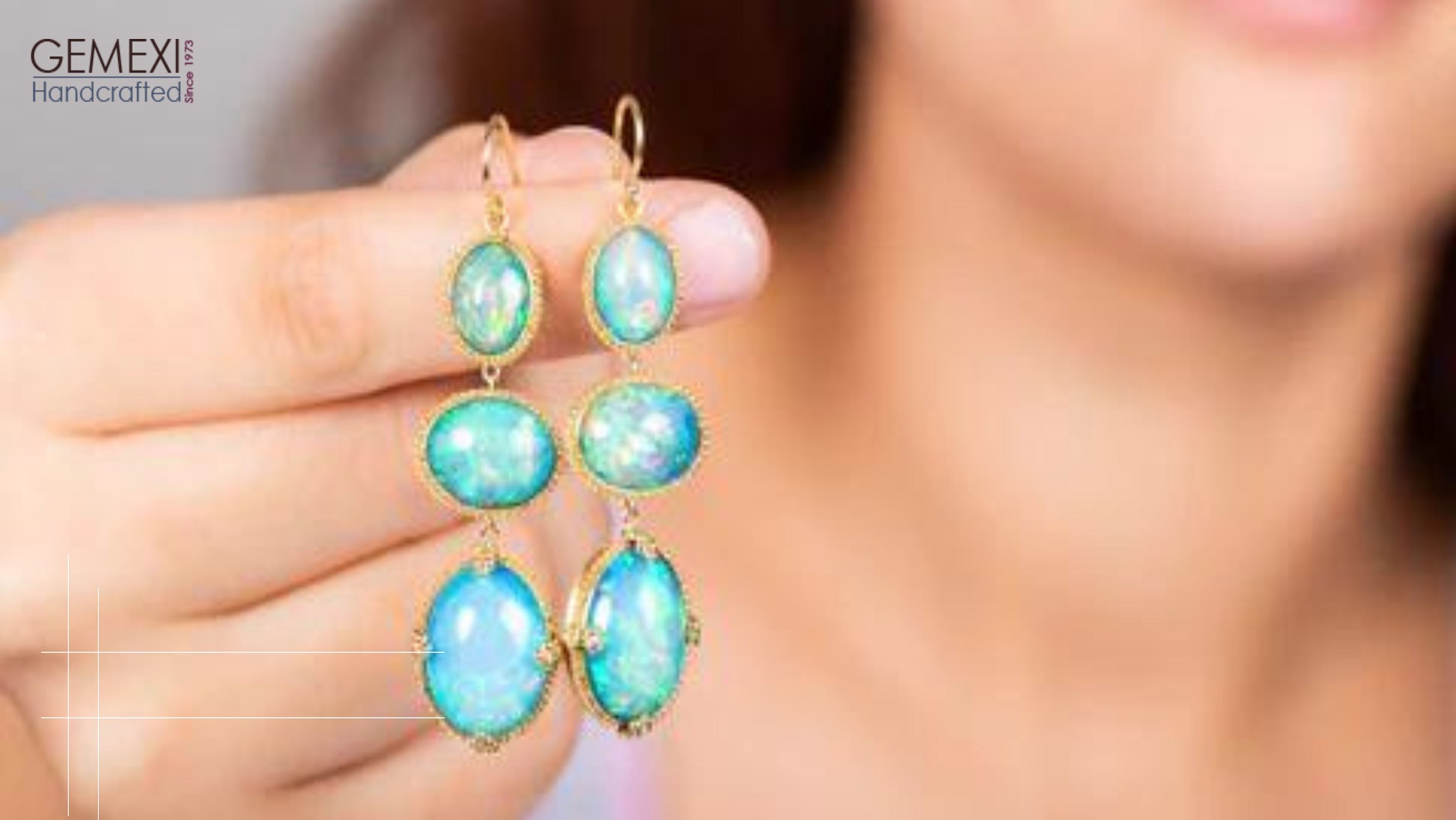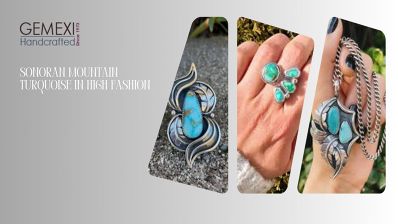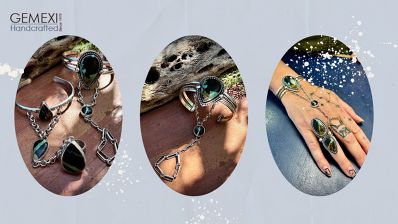The Enchantment of Ethiopian Opal Jewelry: A Kaleidoscope of Colors
By Gemexi Team | Jewelry- Updated On Jul 17, 2024

If you’ve ever been captivated by a gemstone’s ability to change colors in the light, then Ethiopian opal jewelry is bound to steal your heart. These stunning gemstones, hailing from the Ethiopian highlands, are renowned for their vibrant play of colors that seem to dance under any light source. Let’s dive deep into the world of Ethiopian opals and uncover what makes them so special, from their origins to how to best care for these dazzling jewels.
The Origins of Ethiopian Opal Jewelry
-
The Discovery
Ethiopian opals were first discovered in the Shewa Province in the early 1990s, a revelation that caused quite a stir in the gemstone market. Before this, Australia was the primary source of opals, but these new Ethiopian finds quickly gained attention due to their unique and fiery color play. The most significant deposits are found in the Wollo Province, known for producing opals with an exceptionally vibrant spectrum of colors.
- The Geological Formation
Formed in volcanic rocks, Ethiopian opals are truly a geological wonder. Unlike sedimentary opals from other regions, these volcanic opals are created from silica-rich lava that cools and solidifies, trapping water within. This unique formation process gives Ethiopian opals their distinctive play-of-color, often described as a kaleidoscope effect.
The Allure of Ethiopian Opal Jewelry
- The Play of Colors
What sets Ethiopian opals apart from other opals is their remarkable play of colors. When you tilt and turn an Ethiopian opal, you’ll see flashes of vibrant hues—reds, blues, greens, and more—shifting and changing with the light. This phenomenon, called "play-of-color," is caused by the diffraction of light within the microstructure of the opal.
- The Versatility
Ethiopian opal jewelry is incredibly versatile, suiting both casual and formal attire. Whether set in a delicate silver necklace or a bold gold ring, these opals can enhance any outfit with their mesmerizing colors. They’re particularly popular in boho-chic styles, where their natural, earthy appearance complements the laid-back yet stylish aesthetic.
- Unique Patterns
No two Ethiopian opals are exactly alike. Each stone has its own unique pattern and color play, making every piece of Ethiopian opal jewelry one-of-a-kind. This individuality is a big draw for those who value uniqueness and personal expression in their accessories.
How to Choose the Perfect Ethiopian Opal Jewelry
- Color and Pattern
When selecting Ethiopian opal jewelry, pay attention to the color and pattern of the opal. High-quality opals will have a vibrant play-of-color that’s evenly distributed across the stone. Look for opals with multiple colors and a bright, lively appearance.
- Clarity and Transparency
Clarity is another important factor. Ethiopian opals can range from opaque to semi-transparent. Generally, the more transparent the opal, the more valuable it is. Clear opals with bright, distinct color flashes are highly prized.
- Setting and Design
The setting and design of the jewelry piece also matter. Choose a setting that protects the opal, as these gemstones can be relatively soft compared to other gemstones. Bezel settings, where the opal is surrounded by metal, offer good protection. Additionally, consider the overall design and how it complements your style.
Caring for Ethiopian Opal Jewelry
- Avoiding Water and Chemicals
Ethiopian opals are hydrophane, meaning they can absorb water. This can cause the opal to temporarily lose its play-of-color and even crack if it dries too quickly. Therefore, avoid wearing Ethiopian opal jewelry when swimming, bathing, or cleaning. Keep them away from harsh chemicals, which can damage the stone.
- Storing Properly
Store your opal jewelry in a cool, dry place. Use a soft pouch or a jewelry box with a fabric lining to protect the opal from scratches. It’s best to store each piece separately to prevent them from rubbing against each other or other jewelry items.
- Gentle Cleaning
To clean Ethiopian opal jewelry, use a soft, damp cloth to gently wipe the stone. Avoid using ultrasonic cleaners or steamers, as the intense vibrations and heat can damage the opal. If your opal needs a more thorough cleaning, it’s best to take it to a professional jeweler.
FAQs About Ethiopian Opal Jewelry
What makes Ethiopian opals different from other opals?
Ethiopian opals are known for their vibrant play-of-color and unique formation process in volcanic rocks. They also tend to be more affordable than Australian opals, making them an attractive option for gemstone enthusiasts.
Can Ethiopian opals change color?
Yes, Ethiopian opals are hydrophane and can change color if they absorb water. This change is usually temporary, and the opal will revert to its original color once it dries.
How can I tell if my Ethiopian opal is high quality?
High-quality Ethiopian opals have a bright, vibrant play-of-color that’s evenly distributed. They are also generally clear and transparent. If you’re unsure, it’s always a good idea to consult with a professional jeweler.
Are Ethiopian opals durable?
While beautiful, Ethiopian opals are relatively soft and prone to scratching or cracking. Proper care and storage are essential to maintain their beauty.
Conclusion
Ethiopian opal jewelry is a stunning and unique choice for anyone looking to add a touch of color and elegance to their collection. These gemstones are sure to captivate and delight with their vibrant play-of-color and one-of-a-kind patterns. Whether you’re drawn to their geological wonder, their versatility in fashion, or simply their sheer beauty, Ethiopian opals are a gemstone worth cherishing. Remember to care for your opals properly to ensure they remain as enchanting as the day you first saw them.










0 Comments
Write Comments